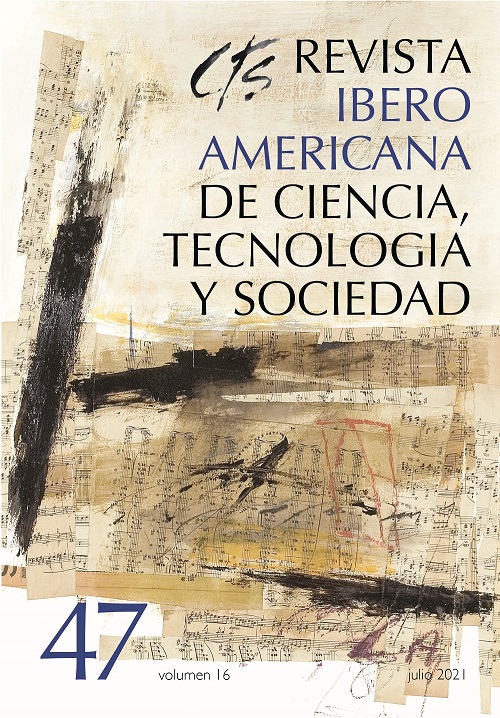Una aproximación general al desarrollo de los coches autónomos
Palabras clave:
coches autónomos, inteligencia artificial, movilidad, cultura, ventajas, desventajasResumen
El propósito de este trabajo consiste en llevar a cabo una aproximación introductoria al ámbito de los coches autónomos. En primer lugar, se hace un breve repaso histórico para observar su evolución y posteriormente se destaca la importancia que posee la investigación en inteligencia artificial para el desarrollo de esta tecnología autónoma. Los coches autónomos suscitan un cambio cultural en la movilidad que viene acompañado de ventajas, oportunidades, riesgos y amenazas que deben ser sometidas a un juicio valorativo. Por ello resulta fundamental llevar a cabo una aproximación general al desarrollo de los coches autónomos como una novedad tecnológica que condicionará la vida del futuro en materia de movilidad y gestión del tiempo.Descargas
Citas
Awad, E., Dsouza, S., Kim, R., Schulz, J., Henrich, J., Shariff, A., Bonnefon, J.-F. y Rahwan, I. (2018). The Moral Machine experiment. Nature, 563, 59-64. Recuperado de: https://www.nature.com/articles/s41586-018-0637-6.
Barclays (2015). Disruptive Mobility: A Scenario for 2040. Recuperado de:: https://www.investmentbank.barclays.com/content/dam/barclaysmicrosites/ibpublic/documents/investment-bank/global-insights/barclays-disruptive-mobility-pdf-120115-459kb.pdf.
Barclays (2016). Driverless vehicles: A new engine for economic transformation? Recuperado de: https://www.barclayscorporate.com/content/dam/barclayscorporate-com/documents/insights/innovation/barclays-corporate-driverless-vehicles-oct-2016.pdf.
Bauman, Z. (2017). Modernidad líquida. Madrid: Fondo de Cultura Económica de España.
Berbouch, M. (2018). Uber Self-Driving Car Crash: What Really Happened. Forbes, 28 de mayo. Recuperado de: https://www.forbes.com/sites/meriameberboucha/2018/05/28/uber-self-driving-car-crash-what-really-happened/#708feea4dc41.
Bogost, I. (2014). The Secret History of the Robot Car. The Atlantic, noviembre. Recuperado de: https://www.theatlantic.com/magazine/archive/2014/11/the-secret-history-of-the-robot-car/380791/.
Checkoway, S., McCoy, D., Kantor, B., Anderson, D., Shacham, H. y Savage, S. (2011). Comprehensive Experimental Analyses of Automotive Attack Surfaces. Recuperado de: http://www.autosec.org/pubs/cars-usenixsec2011.pdf.
Coeckelbergh, M. (2011). From Killer Machines to Doctrines and Swarms, or Why Ethics of Military Robotics Is not (Necessarily) About Robots. Philosophy & Technology, 24, 269-278.
Collins, H. M. (1990). Artificial Experts. Cambridge: MIT Press.
Comisión Europea (2009). Vehicle Event Recording base don Intelligent Crash Assessment. Recuperado de: https://ec.europa.eu/transport/road_safety/sites/roadsafety/files/pdf/projects_sources/veronica2_final_report.pdf.
DickmannI, J., Appenrodt, N. y Brenk, C. (2014). Making Bertha: Radar is the key to Mercedes-Benz’s robotic car. IEEE Spectrum, 44–49.
Diéguez, A. (1993). Tecnología y responsabilidad. Revista de Filosofía, 9, 189-200.
Durán Heras, M. A. (2010). Tiempo de vida y tiempo de trabajo. Madrid: Fundación BBVA. Recuperado de: http://digital.csic.es/bitstream/10261/101047/3/Duran_Tiempo_vida_trabajo.pdf.
Durán Heras, M. A. (2012). El trabajo no remunerado en la economía global. Madrid: Fundación BBVA. Recuperado de: http://digital.csic.es/bitstream/10261/76517/3/Duran_Trabajo_No_Remunerado.pdf.
Ethical Hacking New Tutorials (2016). Hacking a Car with an Ex NSA Hacker CYBERWAR Clip YouTube. Youtube. Recuperado de: https://www.youtube.com/watch?v=OlP8An2t15w.
Kumar Amara, D., Renu Chebrolu, N., Vinayakumar, R. y Soman, K. (2018). A Brief Survey on Autonomous Vehicle Possible Attacks, Exploits and Vulnerabilities. Recuperado de: https://www.researchgate.net/publication/328189443_A_Brief_Survey_on_Autonomous_Vehicle_Possible_Attacks_Exploits_and_Vulnerabilities.
Lee Sayton, E. (2011). Driverless Dreams: Technological Narratives and the Shape of the Automated Car. MIT Press.
Limón, R. (2018). El coche del accidente mortal de Uber tenía inhabilitada la frenada de emergencia. El País, 12 de junio. Recuperado de: https://elpais.com/tecnologia/2018/06/12/actualidad/1528798311_923424.html.
Massachusetts Institute Of Technology (2016). Moral Machine. Disponible en: http://moralmachine.mit.edu/hl/es.
Maxmena, A. (2018). Self-driving car dilemas reveal that moral choices are not universal. Nature.
McKinsey & Company (2017). Self-driving car technology: When Will the robots hit the road? Our Insights. Recuperado de: https://www.mckinsey.com/industries/automotive-and-assembly/our-insights/self-driving-car-technology-when-will-the-robots-hit-the-road.
Moisés, B. A. (2019). Consideraciones jurídicas acerca del coche autónomo. Actualidad Jurídica Uría Menéndez, 52, 101-108.
Novak, M. (2013). The National Automated Highway System That Almost Was. Smithsonian. Recuperado de: http://www.smithsonianmag.com/history/thenational-automated-highway-system-that-almost-was-63027245/.
Organización de Naciones Unidas (2015). Objetivos de Desarrollo Sostenible. Recuperado de: https://www.undp.org/content/undp/es/home/sustainable-development-goals.html.
Park, S. y Choi, J.-Y. (2020). Malware Detection in Self-Driving Vehicles Using Machine Learning Algorithms. Journal of Advanced Transportation, 3, 1-9.
Parkinson, S., Ward, P., Wilson, K. y Miller, J. (2017). Cyber Threats Facing Autonomous and Connected Vehicles: Future Challengues. IEEE Transactions on Intelligente Transportation Systems, 18(11).
Peña, M. (2018). Waymo explica el rol esencial de la inteligencia artificial en la tecnología autónoma. Digital Trends, 8 de mayo. Recuperado de: https://es.digitaltrends.com/autos/waymo-inteligencia-artificial-autos-autonomos/.
Rouhiainen, L. (2018). Inteligencia artificial. 101 cosas que debes saber hoy sobre nuestro futuro. Barcelona: Editorial Planeta.
Ruiz Domínguez, F. (2017). La implantación del automóvil inteligente: ¿un riesgo calculado para la seguridad global? Madird: Instituto Español de Estudios Estratégicos. Recuperado de: http://www.ieee.es/Galerias/fichero/docs_opinion/2017/DIEEEO60-2017_Automovil_Inteligente_FRuizDominguez.pdf.
SAE International (2019). Levels of Driving. Recuperado de: https://www.sae.org/news/2019/01/sae-updates-j3016-automated-driving-graphic.
Sánchez, C. (2018). Parar de investigar el coche autónomo por los accidentes sería un gran error. Eldiario.es, 12 de abril. Recuperado de: https://www.eldiario.es/hojaderouter/movilidad/Parar-investigar-coche-autonomo-accidentes_0_760124707.html.
Ulmer, B. (1994). VITA II - Active Collision Avoidance in Traffic. Proceedings of the Intelligent Vehicles. 94 Symposium, 1-6.
Walker, J. (2014). Robots Don’t Drink and Drive. Recuperado de: https://rmi.org/robots-dont-drink-drive/.
Wetmore, J. (2003). Driving the Dream: The History and Motivations Behind 60 Years of Automated Highway Systems. Automotive History Review. Recuperado de: https://cspo.org/library/driving-the-dream-the-history-and-motivations-behind-60-years-of-automated-highway-systems-in-america/.
Descargas
Publicado
Cómo citar
Número
Sección
Licencia
Todos los números de CTS y sus artículos individuales están bajo una licencia CC-BY.
Desde 2007, CTS proporciona un acceso libre, abierto y gratuito a todos sus contenidos, incluidos el archivo completo de su edición cuatrimestral y los diferentes productos presentados en su plataforma electrónica. Esta decisión se sustenta en la creencia de que ofrecer un acceso libre a los materiales publicados ayuda a un mayor y mejor intercambio del conocimiento.
A su vez, para el caso de su edición cuatrimestral, la revista permite a los repositorios institucionales y temáticos, así como también a las web personales, el auto-archivo de los artículos en su versión post-print o versión editorial, inmediatamente después de la publicación de la versión definitiva de cada número y bajo la condición de que se incorpore al auto-archivo un enlace a la fuente original.











